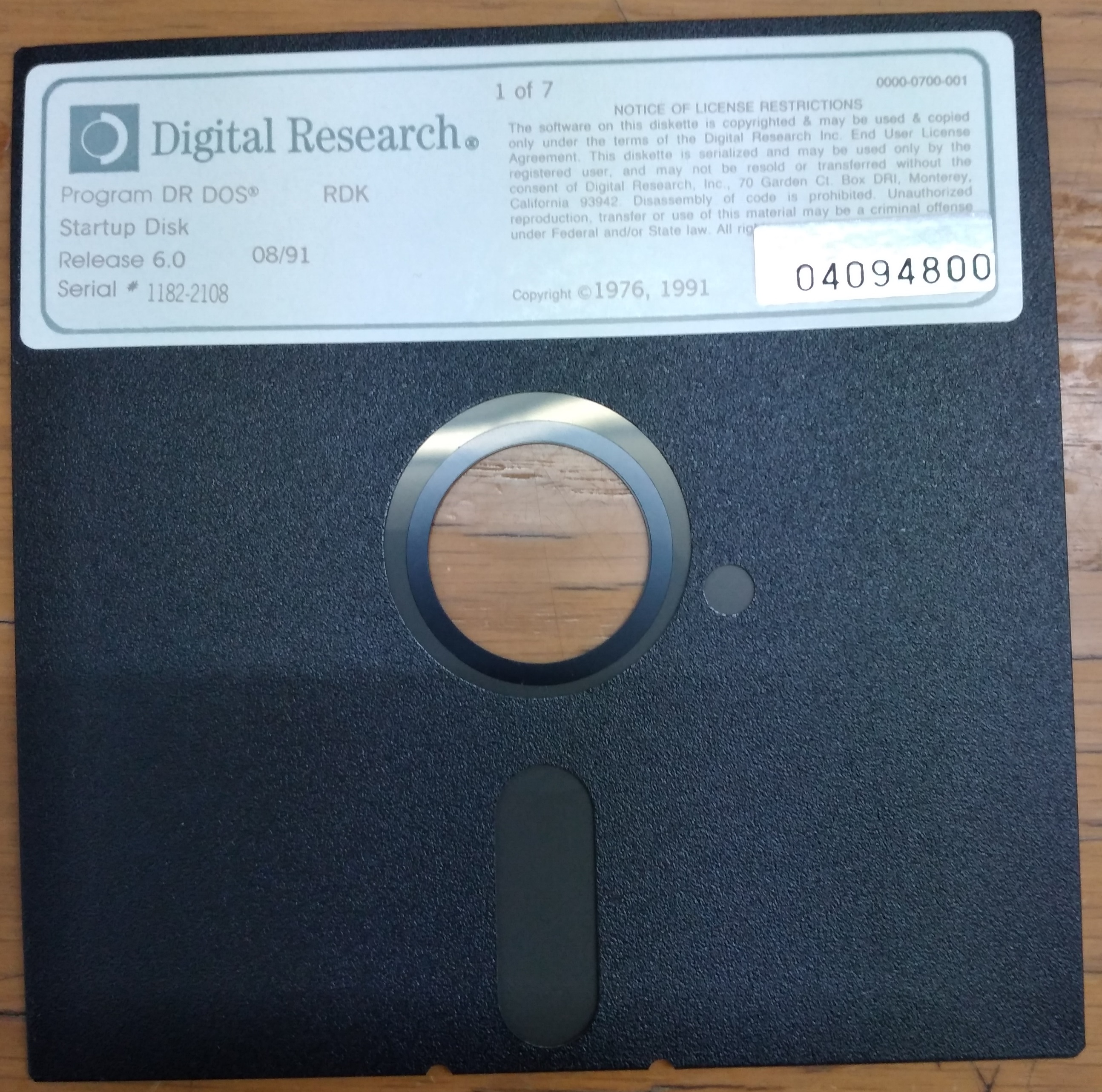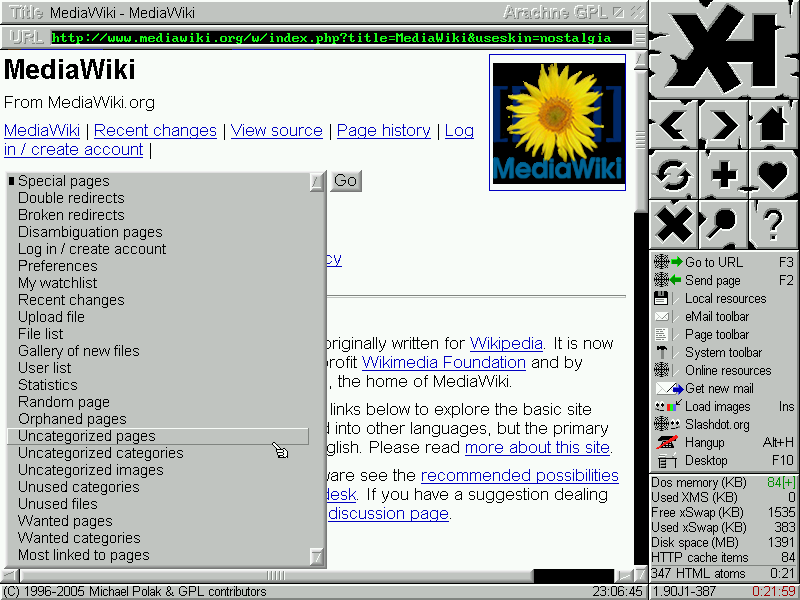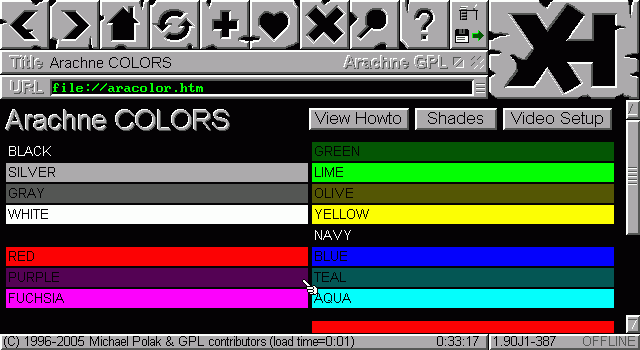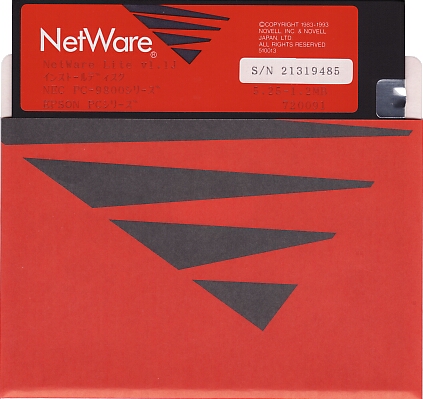|
DR-WebSpyder
DR-WebSpyder is a DOS web browser, mail client and operating system runtime environment that was developed by Caldera UK in 1997. It was based on the DR-DOS operating system and networking components from Novell as well as the Arachne web browser by Michal Polák of xChaos software. The system was designed to run on low-end desktop systems, but being able to boot and execute from disk as well as from ROM or network, it was also tailored for x86-based thin clients and embedded systems with or without disk drives. Using the web browser as its principal user interface, it could be also used for kiosk systems and set-top boxes. Named Embrowser, it has been ported to Linux in 1999 and was called Embedix Browser since 2000. NIOS and IOS DR-WebSpyder was originally conceived as project NIOS (Novell Internet Operating System) at Novell's European Development Centre (EDC), UK in 1994 by then DR-DOS engineer Roger Alan Gross, who was working on Novell's Embedded Systems Technology ( ... [...More Info...] [...Related Items...] OR: [Wikipedia] [Google] [Baidu] |
Caldera Thin Clients
Lineo was a thin client and embedded systems company spun out of Caldera Thin Clients by 20 July 1999. History Caldera Thin Clients, Inc., had been created as a subsidiary of Caldera, Inc., on 2 September 1998. Caldera Thin Clients' original President and CEO was Roger Alan Gross, who resigned in January 1999. In April 1999, Caldera Thin Clients released the no longer needed sources to GEM and ViewMAX under the GNU General Public License (GPL). In July 1999, Caldera Thin Clients decided on a major refocus on Linux and consequently changed its name to Lineo. Lineo licensed a stripped down OpenLinux distribution from Caldera Systems and named it Embedix. They continued to maintain the former Caldera Thin Clients sales office in Taipei in 1999. In January 2000, Lineo reincorporated in Delaware. Lineo's technologies fully owned were well ahead of competitors' products in the embedded system portion. These technologies included: * Rt-Control provided μClinux - a version of Lin ... [...More Info...] [...Related Items...] OR: [Wikipedia] [Google] [Baidu] |
Caldera UK
DR-DOS (written as DR DOS, without a hyphen, in versions up to and including 6.0) is a disk operating system for IBM PC compatibles. Upon its introduction in 1988, it was the first DOS attempting to be compatible with IBM PC DOS and MS-DOS (which were the same product sold under different names). DR-DOS was developed by Gary A. Kildall's Digital Research and derived from Concurrent PC DOS 6.0, which was an advanced successor of CP/M-86. As ownership changed, various later versions were produced with names including #Novell DOS, Novell DOS and #OpenDOS, Caldera OpenDOS. History Origins in CP/M Digital Research's original CP/M for the 8-bit Intel 8080- and Zilog Z80, Z-80-based systems spawned numerous spin-off versions, most notably CP/M-86 for the Intel 8086/Intel 8088, 8088 family of processors. Although CP/M had dominated the market since the mid-1970s, and was shipped with the vast majority of non-proprietary-architecture personal computers, the IBM PC in 1981 bro ... [...More Info...] [...Related Items...] OR: [Wikipedia] [Google] [Baidu] |
DR-DOS
DR-DOS (written as DR DOS, without a hyphen, in versions up to and including 6.0) is a disk operating system for IBM PC compatibles. Upon its introduction in 1988, it was the first DOS attempting to be compatible with IBM PC DOS and MS-DOS (which were the same product sold under different names). DR-DOS was developed by Gary A. Kildall's Digital Research and derived from Concurrent PC DOS 6.0, which was an advanced successor of CP/M-86. As ownership changed, various later versions were produced with names including Novell DOS and Caldera OpenDOS. History Origins in CP/M Digital Research's original CP/M for the 8-bit Intel 8080- and Z-80-based systems spawned numerous spin-off versions, most notably CP/M-86 for the Intel 8086/8088 family of processors. Although CP/M had dominated the market since the mid-1970s, and was shipped with the vast majority of non-proprietary-architecture personal computers, the IBM PC in 1981 brought the beginning of what was eventual ... [...More Info...] [...Related Items...] OR: [Wikipedia] [Google] [Baidu] |
XChaos Software
Arachne is a stable Internet suite containing a graphical web browser, email client, and dialer. Originally, Arachne was developed by Michal Polák under his xChaos label, a name he later changed into Arachne Labs. It was written in C and compiled using Borland C++ 3.1. Arachne has since been released under the GPL as Arachne GPL. Arachne primarily runs on DOS-based operating systems, but includes builds for Linux as well. The Linux version relies on SVGALib and therefore does not require a display server. Background Arachne supports many file formats, protocols and standards including video modes from CGA 640×200 in monochrome to VESA 1024×768 in high color mode ( colors). It is designed for systems that do not have any windowing system installed. Arachne supports multiple image formats including JPEG, PNG, BMP and animated GIF. It supports a subset of the HTML 4.0 and CSS 1.0 standards, including full support for tables and frames. Supported protocols include FTP, ... [...More Info...] [...Related Items...] OR: [Wikipedia] [Google] [Baidu] |
Arachne (web Browser)
Arachne is a stable Internet suite containing a graphical web browser, email client, and dialer. Originally, Arachne was developed by Michal Polák under his xChaos label, a name he later changed into Arachne Labs. It was written in C and compiled using Borland C++ 3.1. Arachne has since been released under the GPL as Arachne GPL. Arachne primarily runs on DOS-based operating systems, but includes builds for Linux as well. The Linux version relies on SVGALib and therefore does not require a display server. Background Arachne supports many file formats, protocols and standards including video modes from CGA 640×200 in monochrome to VESA 1024×768 in high color mode ( colors). It is designed for systems that do not have any windowing system installed. Arachne supports multiple image formats including JPEG, PNG, BMP and animated GIF. It supports a subset of the HTML 4.0 and CSS 1.0 standards, including full support for tables and frames. Supported protocols include FTP ... [...More Info...] [...Related Items...] OR: [Wikipedia] [Google] [Baidu] |
Michal Polák (programmer)
Arachne is a stable Internet suite containing a graphical web browser, email client, and dialer. Originally, Arachne was developed by Michal Polák under his xChaos label, a name he later changed into Arachne Labs. It was written in C and compiled using Borland C++ 3.1. Arachne has since been released under the GPL as Arachne GPL. Arachne primarily runs on DOS-based operating systems, but includes builds for Linux as well. The Linux version relies on SVGALib and therefore does not require a display server. Background Arachne supports many file formats, protocols and standards including video modes from CGA 640×200 in monochrome to VESA 1024×768 in high color mode ( colors). It is designed for systems that do not have any windowing system installed. Arachne supports multiple image formats including JPEG, PNG, BMP and animated GIF. It supports a subset of the HTML 4.0 and CSS 1.0 standards, including full support for tables and frames. Supported protocols include FTP ... [...More Info...] [...Related Items...] OR: [Wikipedia] [Google] [Baidu] |
NetWare Mobile
NetWare Lite and Personal NetWare are a series of discontinued peer-to-peer local area networks developed by Novell for DOS- and Windows-based personal computers aimed at personal users and small businesses in the 1990s. NetWare Lite In 1991, Novell introduced a radically different and cheaper product from their central server-based NetWare product, NetWare Lite 1.0 (NWL), codenamed "Slurpee", in answer to Artisoft's similar LANtastic. Both were peer-to-peer systems, where no dedicated server was required, but instead all PCs on the network could share their resources. Netware Lite contained a unique serial number in the EXE files that prevented running the same copy on multiple nodes within a single network. This basic copy protection was easily circumvented by comparing files from different licenses and accordingly editing the serial number bytes. The product was upgraded to NetWare Lite 1.1 and also came bundled with DR DOS 6.0. Some comp ... [...More Info...] [...Related Items...] OR: [Wikipedia] [Google] [Baidu] |
LAN Workplace For DOS
NetWare Lite and Personal NetWare are a series of discontinued peer-to-peer local area networks developed by Novell for DOS- and Windows-based personal computers aimed at personal users and small businesses in the 1990s. NetWare Lite In 1991, Novell introduced a radically different and cheaper product from their central server-based NetWare product, NetWare Lite 1.0 (NWL), codenamed "Slurpee", in answer to Artisoft's similar LANtastic. Both were peer-to-peer systems, where no dedicated server was required, but instead all PCs on the network could share their resources. Netware Lite contained a unique serial number in the EXE files that prevented running the same copy on multiple nodes within a single network. This basic copy protection was easily circumvented by comparing files from different licenses and accordingly editing the serial number bytes. The product was upgraded to NetWare Lite 1.1 and also came bundled with DR DOS 6.0. Some comp ... [...More Info...] [...Related Items...] OR: [Wikipedia] [Google] [Baidu] |
Novell Embedded Systems Technology
Novell Embedded Systems Technology (NEST) was a series of APIs, data formats and network protocol stacks written in a highly portable fashion intended to be used in embedded systems. The idea was to allow various small devices to access Novell NetWare services, provide such services, or use NetWare's IPX protocol as a communications system (and later also TCP/IP). Novell referred to this concept as "Extended Networks", and when the effort was launched they boasted that they wanted to see one billion devices connected to NetWare networks by year 2000. NEST was launched in mid-1994 countering Microsoft's similar Microsoft at Work efforts, which had been launched in 1993. Neither technology saw much third-party support, although some of NEST's code was apparently re-used in Novell Distributed Print Services (NDPS), and thus iPrint. Architecture NEST consisted primarily of a Novell protocol driver stack implemented in ANSI C. The stack included drivers for then-popular networking ... [...More Info...] [...Related Items...] OR: [Wikipedia] [Google] [Baidu] |
Kaffe
Kaffe is a discontinued "clean room design" (reverse engineering) version of a Java Virtual Machine. It comes with a subset of the Java Platform, Standard Edition (Java SE), Java API, and tools needed to provide a Java runtime environment. Like most other Free Java virtual machines, Kaffe uses GNU Classpath as its class library. Kaffe, first released in 1996, was the original open-source Java implementation. Initially developed as part of another project, it grew so popular that developers Tim Wilkinson and Peter Mehlitz founded Transvirtual Technologies, Inc. with Kaffe as the company's flagship product. In July 1998, Transvirtual released Kaffe OpenVM under a GNU General Public License. Kaffe is a lean and portable virtual machine, although it is significantly slower than commercial implementations. When compared to the reference implementation of the Java Virtual Machine written by Sun Microsystems, Kaffe is significantly smaller; it thus appeals to embedded system developer ... [...More Info...] [...Related Items...] OR: [Wikipedia] [Google] [Baidu] |
Java Virtual Machine
A Java virtual machine (JVM) is a virtual machine that enables a computer to run Java programs as well as programs written in other languages that are also compiled to Java bytecode. The JVM is detailed by a specification that formally describes what is required in a JVM implementation. Having a specification ensures interoperability of Java programs across different implementations so that program authors using the Java Development Kit (JDK) need not worry about idiosyncrasies of the underlying hardware platform. The JVM reference implementation is developed by the OpenJDK project as open source code and includes a JIT compiler called HotSpot. The commercially supported Java releases available from Oracle are based on the OpenJDK runtime. Eclipse OpenJ9 is another open source JVM for OpenJDK. JVM specification The Java virtual machine is an abstract (virtual) computer defined by a specification. It is a part of java runtime environment. The garbage-collection algorithm u ... [...More Info...] [...Related Items...] OR: [Wikipedia] [Google] [Baidu] |
TCP/IP
The Internet protocol suite, commonly known as TCP/IP, is a framework for organizing the set of communication protocols used in the Internet and similar computer networks according to functional criteria. The foundational protocols in the suite are the Transmission Control Protocol (TCP), the User Datagram Protocol (UDP), and the Internet Protocol (IP). In the development of this networking model, early versions of it were known as the Department of Defense (DoD) model because the research and development were funded by the United States Department of Defense through DARPA. The Internet protocol suite provides end-to-end data communication specifying how data should be packetized, addressed, transmitted, routed, and received. This functionality is organized into four abstraction layers, which classify all related protocols according to each protocol's scope of networking. An implementation of the layers for a particular application forms a protocol stack. From lowest to high ... [...More Info...] [...Related Items...] OR: [Wikipedia] [Google] [Baidu] |







